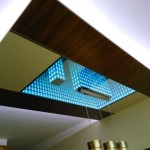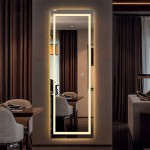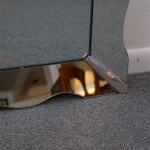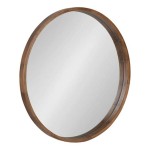Does a Convex Mirror Produce an Image?
Convex mirrors, often referred to as "fish-eye" mirrors, are curved mirrors where the reflecting surface bulges outward. Unlike plane mirrors, which reflect light in a straight line, convex mirrors cause light rays to diverge, or spread out, after reflection. This diverging nature influences how images are formed, making them distinctly different from those produced by plane or concave mirrors.
Despite the diverging nature of light reflection off a convex mirror, it does indeed produce an image. However, these images possess unique characteristics that distinguish them from those formed by other types of mirrors.
Characteristics of Images Produced by Convex Mirrors
The image formed by a convex mirror is always:
- Virtual: This means the image cannot be projected onto a screen, as the light rays do not actually converge at a point. The image is formed by the apparent intersection of diverging light rays behind the mirror.
- Upright: The image is oriented in the same direction as the object. This is in contrast to concave mirrors, which can produce inverted images depending on the object's position.
- Smaller than the object: The image is always reduced in size compared to the object. This is because the diverging light rays create a smaller virtual image behind the mirror.
How Convex Mirrors Form Images
The image formation in a convex mirror can be explained by tracing the paths of light rays originating from an object and reflecting off the mirror's surface. Here's a simplified explanation:
- Ray 1: A ray parallel to the principal axis (a line perpendicular to the mirror's surface at its center) will reflect off the mirror and appear to originate from the focal point (F) behind the mirror.
- Ray 2: A ray passing through the center of curvature (C) of the mirror will reflect back along the same path.
- Ray 3: A ray passing through the focal point (F) will reflect parallel to the principal axis.
These three rays, after reflecting off the convex mirror, will diverge. However, when extended backward behind the mirror, they appear to intersect at a point forming a virtual, upright, and reduced image of the object. The position of the image depends on the position of the object relative to the mirror.
Applications of Convex Mirrors
The unique characteristics of images produced by convex mirrors make them useful in various applications:
- Rear-view mirrors in vehicles: Convex mirrors provide a wider field of view, enabling drivers to see more of the road and traffic behind them.
- Security mirrors: Convex mirrors are used in stores and other public places to prevent theft. They allow security personnel to have a wider view of the area.
- Street corner mirrors: Convex mirrors help drivers see around blind corners, improving road safety.
- Telescopes: Convex mirrors act as secondary mirrors in some types of telescopes, redirecting reflected light to a focal point.
- Optical instruments: Convex mirrors are used in various optical instruments like microscopes and binoculars to modify the path of light and enlarge the image.
The use of convex mirrors is widespread due to their ability to provide a wider field of view and produce virtual, upright, and reduced images. These characteristics make them valuable tools in various applications, from everyday safety to scientific research.
Can A Convex Mirror Produce Real Image
Can A Convex Mirror Form Magnified Image Quora
Can A Convex Mirror Produce Real Image When The Object Is Virtual And Vice Versa Concave If Yes How Will It Be Possible Why Quora
Can A Convex Mirror Form Real Image Quora

Can A Convex Mirror Produce Real Image When The Object Is Virtual And Vice Versa Concave If Yes How Will It Be Possible Why Quora
Can A Convex Mirror Form Real Image Quora

Question Recalling Whether The Image Produced By A Convex Mirror Can Be Inverted Nagwa
How Do Reflections From Convex Mirrors Make Objects Appear Smaller Quora
Can Convex Mirrors Produce Lateral Inversion Quora

Convex Mirror Image Formation Conditions Ray Diagram Uses








